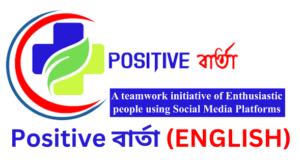Navigating the Metaverse: The term “metaverse” has been gaining traction in recent years, often conjuring up images of futuristic virtual worlds and immersive online experiences. While the concept remains largely theoretical, the metaverse holds immense potential to revolutionize the way we interact, work, and play.
Defining the Metaverse
The term “metaverse” was coined by science fiction writer Neal Stephenson in his 1992 novel “Snow Crash,” where it described a shared virtual world where people could interact as avatars. In broader terms, the metaverse is envisioned as a network of 3D virtual worlds that converge with the physical world, allowing users to seamlessly blend their digital and physical lives.
Key Characteristics of the Metaverse
While the metaverse is still in its early stages of development, several key characteristics are emerging:
- Immersiveness: The metaverse is designed to provide an immersive experience, using technologies like virtual reality (VR) and augmented reality (AR) to create a sense of presence and interaction within the virtual world.
- Persistence: Unlike traditional online games, the metaverse is persistent, meaning that it continues to exist even when users are not logged in. This allows for continuous experiences and the development of virtual communities.
- Decentralization: The metaverse is envisioned as a decentralized network, not controlled by any single entity. This could lead to greater freedom and flexibility for users and developers.
- Interoperability: Ideally, the metaverse will allow users to seamlessly move between different virtual worlds and platforms, using standardized protocols and avatars.
Potential Applications of the Metaverse
The metaverse has the potential to transform various aspects of our lives, including:
- Social Interaction: Users could socialize, attend events, and form virtual communities in the metaverse, potentially bridging geographical and cultural barriers.
- Work and Collaboration: Virtual workspaces could facilitate collaboration and communication among remote teams, enhancing productivity and innovation.
- Entertainment and Gaming: Immersive gaming experiences, virtual concerts, and interactive entertainment could revolutionize the way we consume and create content.
- Education and Training: Simulations, virtual field trips, and interactive learning environments could improve education and training outcomes.
- E-commerce and Retail: Virtual stores and showrooms could provide personalized shopping experiences, while digital assets and products could be traded and owned in the metaverse.
Challenges and Considerations
Despite its promise, the metaverse faces several challenges:
- Technology Limitations: Current VR and AR technologies still have limitations in terms of resolution, comfort, and affordability.
- Infrastructure Requirements: Widespread adoption of the metaverse would require significant advancements in network infrastructure to support high-bandwidth, low-latency data transmission.
- Privacy and Security Concerns: The collection and storage of personal data in the metaverse raise privacy and security concerns that need to be addressed.
- Standardization and Interoperability: Ensuring interoperability between different metaverse platforms will be crucial for mass adoption and user experience.
- Social and Ethical Implications: The potential impact of the metaverse on social interactions, mental health, and ethical considerations will need to be carefully studied and addressed.
Read More: What Does Metaverse Mean and How Does This Virtual World Work?







